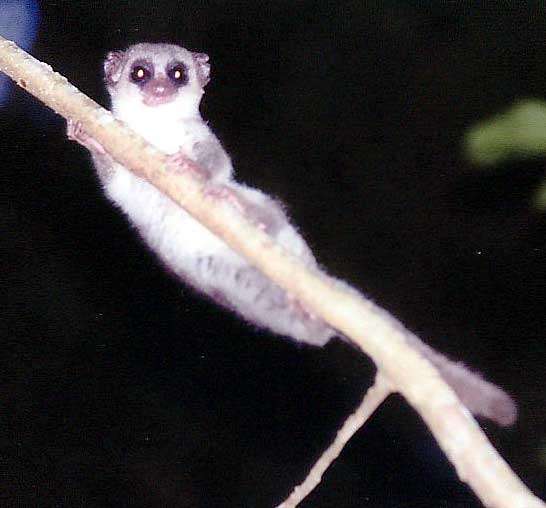September 7, 2016 report
Dwarf lemur found able to sleep during hibernation

(Phys.org)—A team of researchers affiliated with Duke University and Hamburg University has found that a species of dwarf lemur sometimes actually goes to sleep while it is hibernating. In their paper published in the journal Royal Society Open Science, the team describes their study involving measuring bodily conditions of the lemurs, two close cousins, and comparing the results with other non-primates.
Contrary to popular belief, most animals do not sleep while they are hibernating; instead they downregulate, which means their metabolism is greatly reduced to the point of immobility. Bears, for example, do not actually sleep for most of their hibernation period, they simply exist at a lower level for months at a time. In this new effort, the researchers examined the hibernation habits of Cheirogaleus medius, a dwarf lemur that lives in Madagascar.
To learn more about the lemur, also known as the fat-tailed dwarf lemur, the researchers attached monitors to their bodies (while they were hibernating in the wild) that allowed for monitoring body temperature, breathing rate and overall metabolic rate. They also added another monitor that allowed them to monitor brain waves and eye movement, a means of measuring sleep activity. In studying the data, they found that unlike most other primates, the lemurs sometimes went into a sleep state while still hibernating (as measured by a REM state). They noted that it typically occurred only when the ambient temperature rose to above 30°C, due to sleeping in a poorly insulated location—most hibernate in the holes of rotting trees. Intrigued by their findings, the researchers carried out the same type of experiments on two related species that live at higher altitudes. In those cases, they found that the lemurs tended to rouse from their hibernating state before going temporarily into a sleep state. For comparison purposes, they also monitored three types of squirrels and found their hibernation habits most closely resembled the lemurs that hibernated in the higher altitudes.
The researchers cannot say why two species of lemurs rouse during hibernation before sleeping while another does not, but suggest it is likely due to the temperature differences in which the animals reside.
More information: Marina B. Blanco et al. Hibernation in a primate: does sleep occur?, Royal Society Open Science (2016). DOI: 10.1098/rsos.160282
Abstract
During hibernation, critical physiological processes are downregulated and thermogenically induced arousals are presumably needed periodically to fulfil those physiological demands. Among the processes incompatible with a hypome tabolic state is sleep. However, one hibernating primate, the dwarf lemur Cheirogaleus medius, experiences rapid eye movement (REM)-like states during hibernation, whenever passively reaching temperatures above 30°C, as occurs when it hibernates in poorly insulated tree hollows under tropical conditions. Here, we report electroencephalographic (EEG) recordings, temperature data and metabolic rates from two related species (C. crossleyi and C. sibreei), inhabiting high-altitude rainforests and hibernating underground, conditions that mirror, to some extent, those experienced by temperate hibernators. We compared the physiology of hibernation and spontaneous arousals in these animals to C. medius, as well as the much more distantly related non-primate hibernators, such as Arctic, golden-mantled and European ground squirrels. We observed a number of commonalities with non-primate temperate hibernators including: (i) monotonous ultra-low voltage EEG during torpor bouts in these relatively cold-weather hibernators, (ii) the absence of sleep during torpor bouts, (iii) the occurrence of spontaneous arousals out of torpor, during which sleep regularly occurred, (iv) relatively high early EEG non-REM during the arousal, and (v) a gradual transition to the torpid EEG state from non-REM sleep. Unlike C. medius, our study species did not display sleep-like states during torpor bouts, but instead exclusively exhibited them during arousals. During these short euthermic periods, non-REM as well as REM sleep-like stages were observed. Differences observed between these two species and their close relative, C. medius, for which data have been published, presumably reflect differences in hibernaculum temperature.
Journal information: Royal Society Open Science
© 2016 Phys.org




















